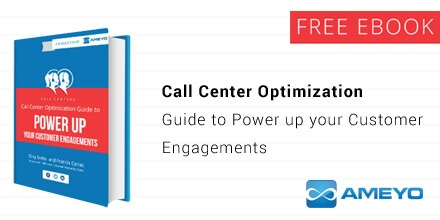With a wide range of healthcare choices available nowadays, customers are making healthcare decisions based on accessibility, customer service and cost. Managing patient engagement plays a critical role for healthcare providers to keep up with the high standards of care required by customers. They need to operate efficiently while delivering high standards of patient care to cope with growing demands of customers and rapid change in technology.
Today, consumers often self-diagnose with lots of information available over the internet. They can easily search for local and near-by medical clinics and make decisions by checking their websites and ratings. Instead of using the phone to fix-up an appointment, the next-gen customers prefer booking their appointments online through the website or mobile app. Today’s patients need self-service access to their personal information and other healthcare related content including appointment confirmations, health reminders, educational tips etc.
Learn how can you improve customer service in healthcare industry
According to a recent Gartner study, healthcare service organizations will need to raise their performance standards for today’s varied points of patient engagement (mobile, text, email, etc.).
But even today, not all the customers are that tech-savvy and do not have a sound knowledge of how a healthcare system works. Hence, they prefer to speak to a customer service representative for a quick advice or scheduling appointments. In order to serve both, self-service lovers and people who prefer assisted service, healthcare providers have to strike a balance in their customer service offerings to meet the expectations of all.
Below is the list of three features of a customer service software that all the healthcare providers must implement to serve their customers better:
1) Deliver Consistent Omnichannel Experience
A major portion of customers seeking a healthcare support are generally not in the ideal state of mind. And if different customer service channels offer a different experience, it makes them even more frustrated and also damages customer loyalty to a great extent. It forces them question the professionalism and quality of service of the particular brand. For example, if a customer starts the initial engagement with the provider over an online channel but somehow due to an unsolicited reason move to a different platform to complete the interaction, chances are that it will lead to complexity and disappointment as it requires the customer to either repeat the information all over again or wait for a long time to get a human assistance.
According to a research study by Accenture Global Customer Pulse, 72 percent of customers get frustrated with the inconsistent service they receive across different contact channels within the same company.
This happens because different channels are usually managed by different business teams within the organization. But by implementing an omnichannel customer service strategy, these inconsistencies can be easily tackled. It will help them integrate multiple channels. A live customer service representative can have all the details of a customer’s previous transactions taken place over any channel and would know why the customer is calling, hence increasing customer satisfaction and loyalty.
2) Proactive Customer Service
Healthcare systems must take steps to maximize patient engagement and retention at every stage of customer interaction- before, during and after the patient’s visit to the hospital.
Providing proactive notifications via email, text message or a call about appointment confirmation, status updates, educational info, test report updates before the customer asks for it, is vital for keeping the customers engaged, improve loyalty and ultimately the bottom-line.
According to HealthSparq, provider-specific studies from Johns Hopkins and the University of Rochester show proactive patient engagement lead to a 30% decrease in patient no-shows.
Benefits of proactive outreach for patients:
- Send educational info based on appointment type and enhance patient engagement
- Reminders for lab patients to keep them on schedule
- Provide a secure link that allows patients to reschedule their appointment if necessary
- Provide patients with necessary information on insurance required prior to their visit
- Provide general information about hours of operation, directions, parking information, upcoming events, new physician announcements
Benefits of proactive customer service for healthcare providers:
- Minimize patients ‘no show’ rates by allowing them to reschedule before hand
- Keep the patients on schedule, thereby reducing wait time of doctors
- Increase number of patients seen and ultimately your revenue stream
- Bring down front office workload due to enhanced quality of patient communication
Overall, a proactive customer service in healthcare creates long-term loyalty between patients and providers. It costs 90% less to get current patients to return for future than it does to attract new ones.
3) Creating Meaningful Interactions
It is imperative for healthcare providers to understand the entire customer journey. They must gather information from each customer touch-point and create a customer interaction repository, so that the agents or the reps have access to all the data whenever they get to speak with the customer. By tracking and viewing the journey of the customers, an organization can even anticipate their next request.
It also empowers the customer service reps with contextual information before interacting with the customer. This will enable an agent to quickly resolve a customer’s issue. Anticipating their request in advance can drastically reduce the traffic of calls that their contact centers receive without hampering their quality of service.
Using a latest contact center technology with modern features that satisfies the needs of every generation will definitely improve and enhance customer service in healthcare, enabling providers to retain customers and increase loyalty.


